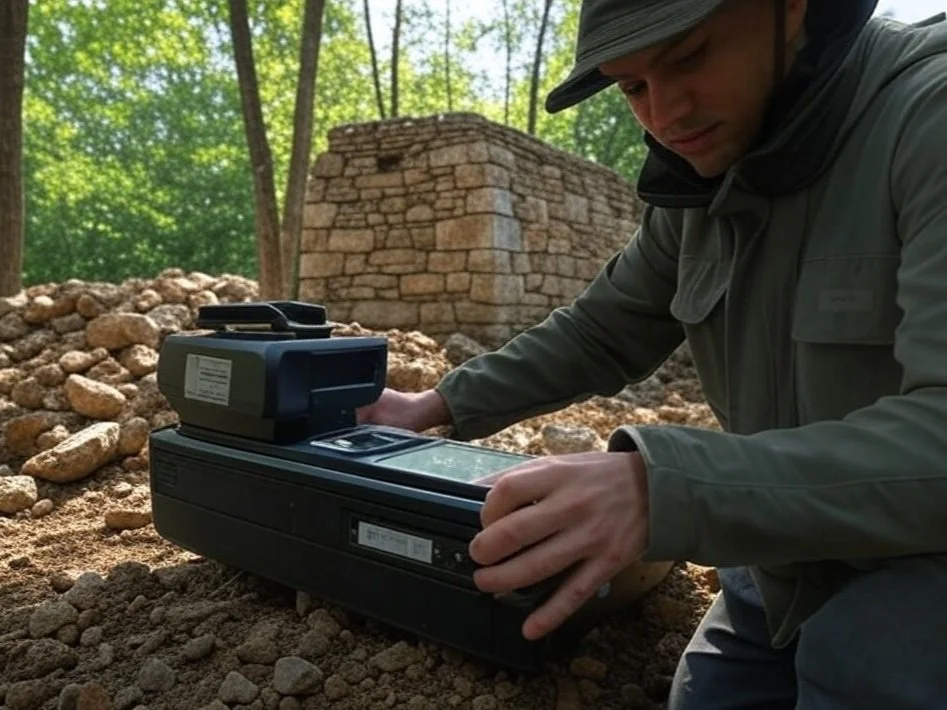Introduction
In recent years, Light Detection and Ranging (Lidar) technology has emerged as a game-changer in the field of archaeology. By enabling researchers to "see through" dense vegetation and map vast landscapes with unprecedented precision, Lidar has revolutionized the way archaeologists study ancient civilizations. This article explains how Lidar technology works, explores its applications in archaeology, highlights key discoveries made possible by its use, and discusses its advantages over traditional excavation methods.
How Lidar Technology Works
Lidar is a remote sensing technology that uses laser pulses to measure distances to the Earth's surface. Here’s how it works:
Laser Emission: A Lidar system mounted on an aircraft, drone, or satellite emits rapid laser pulses toward the ground.
Reflection and Detection: These pulses bounce off objects on the surface, such as trees, buildings, or the ground itself, and return to the sensor.
Distance Calculation: The time it takes for each pulse to return is used to calculate the distance between the sensor and the object.
Data Processing: Millions of data points are collected and processed to create highly detailed 3D maps of the terrain, known as digital elevation models (DEMs).
Lidar can penetrate dense vegetation by capturing multiple returns from a single laser pulse. While some light reflects off the canopy, other pulses reach the ground, allowing researchers to map the underlying topography.
Applications of Lidar in Archaeology
Lidar has become an invaluable tool for archaeologists, enabling them to:
Map Hidden Landscapes: Lidar can reveal ancient roads, settlements, and agricultural systems that are obscured by forests or other vegetation.
Identify Archaeological Features: The technology can detect subtle changes in topography, such as mounds, ditches, and walls, that indicate the presence of buried structures.
Plan Excavations: By providing a detailed overview of a site, Lidar helps archaeologists prioritize areas for excavation and minimize unnecessary digging.
Preserve Cultural Heritage: Lidar allows for non-invasive surveying, reducing the need for physical excavation and helping to preserve fragile sites.
Key Discoveries Enabled by Lidar
The Maya Civilization (Central America): Lidar surveys in Guatemala and Mexico have uncovered thousands of previously unknown structures, including pyramids, causeways, and urban centers. These discoveries have reshaped our understanding of the scale and complexity of Maya societies.
Angkor Wat (Cambodia): Lidar has revealed an extensive network of roads, canals, and settlements surrounding the famous temple complex, providing new insights into the Khmer Empire's urban planning and water management systems.
The Amazon Rainforest (South America): Lidar has uncovered evidence of large-scale pre-Columbian settlements and agricultural systems, challenging the notion that the Amazon was a pristine wilderness before European contact.
Medieval Landscapes (Europe): In England and Ireland, Lidar has mapped ancient field systems, fortifications, and settlements, shedding light on medieval land use and social organization.
Advantages of Lidar Over Traditional Excavation Methods
Speed and Efficiency: Lidar can survey large areas in a fraction of the time it would take to conduct ground-based surveys or excavations.
Non-Invasive: Unlike traditional excavation, Lidar does not disturb the site, making it ideal for studying fragile or culturally sensitive areas.
High Precision: Lidar produces highly accurate 3D maps, allowing archaeologists to identify features that might be missed by the naked eye or traditional surveying methods.
Cost-Effective: While the initial investment in Lidar technology can be high, it reduces long-term costs by minimizing the need for extensive physical excavation.
Versatility: Lidar can be used in a variety of environments, from dense rainforests to arid deserts, making it a versatile tool for global archaeological research.
Challenges and Limitations
Despite its many advantages, Lidar is not without limitations:
Cost: High-resolution Lidar surveys can be expensive, particularly for large areas.
Data Interpretation: The vast amount of data generated by Lidar requires specialized software and expertise to analyze.
Limited Depth: Lidar can only map surface and near-surface features, making it less effective for deeply buried sites.
Conclusion
Lidar technology has transformed the field of archaeology, enabling researchers to uncover hidden landscapes and make groundbreaking discoveries with unprecedented speed and precision. By complementing traditional excavation methods, Lidar has expanded our understanding of ancient civilizations and provided new tools for preserving cultural heritage. As the technology continues to evolve, its applications in archaeology are likely to grow, offering even greater insights into the human past. Lidar is not just a tool for discovery—it is a window into the ingenuity and complexity of our ancestors.







